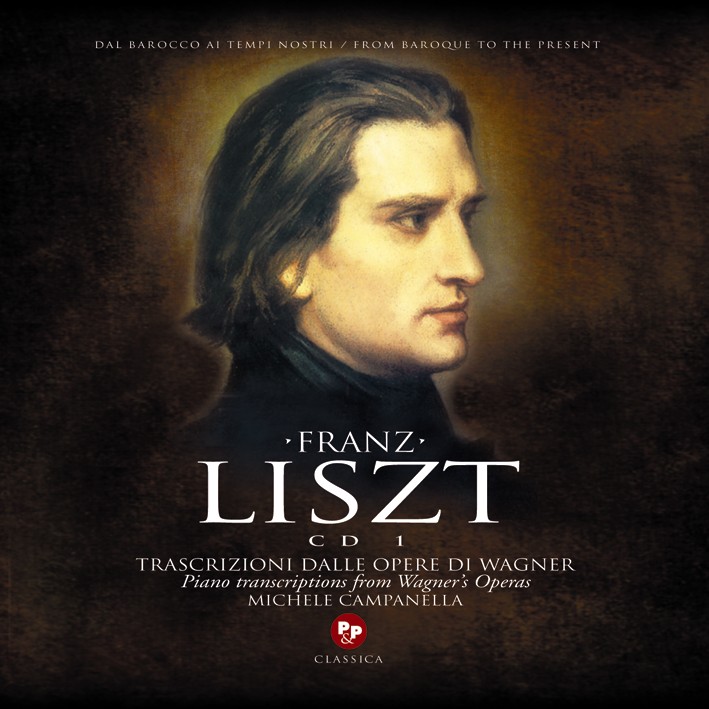
o
|
|
||||
|
|
|
|||
|
The transcriptions were an important moment in Liszt's activity as a composer. The time of machines suited to the publication of music is still in the future. Liszt was engaged in an important work of diffusion because he drew attention to composers and works which would otherwise have remained unknown to a wider public. He did this by exploiting the possibilities at the level of sound of the pianoforte, an instrument which allows the reproduction of the whole range of the orchestra. At an artistic level he did this in such a way as to project such possibilities with good reason into the world of concerts. In his transcriptions Liszt displays an ability to fathom the deepest meanings of the pieces which have been chosen and at the same time - but without betraying them - to produce an original and revealing work. In relation to the music of Wagner, Liszt presents himself with respect and discretion, and creates, nonetheless, extraordinary atmospheres at the level of sound.
Lohengrin A romantic opera in three acts. Music and libretto
by Richard Wagner. First performance: Weimar, the Court Theatre,
28 August 1850. Conceived in 1841, completed in 1845 on the
eve of the first performance of 'Tannhäuser', the libretto is
based upon the Medieval legend of the knight of the swan. The
first theatrical performance was organised personally by Liszt
in response to an explicit request made to him by Wagner. This
is the Wagnerian opera which is most performed in the world
and was the first work by Wagner to be performed in Italy (Bologna,
1871). Principal figures: Heinrich, the King of Germany; Lohengrin;
Elsa of Brabante; Telramud, the Count of Brabante; Ortrud, his
wife. Tannhäuser
und der Sägerkrieg auf Wartburg - Tannhäuser A great romantic
opera in three acts. Music and libretto by Richard Wagner.
First performance: Dresden, Königliches Hoftheater, 19 October
1845. This is perhaps the work which Wagner most loved, and
was certainly the one which required the greatest work. A burning
and exuberant work full of dramatic ideas and musical inventions.
The libretto, written in Paris between 1841 and 1842, refers
to two Medieval legends - one that goes back to a historical
tale of the thirteenth century about the battle of Minnesanger;
the other from the fourteenth century, the story of Venere and
Tannhauser. Principal figures: Tannhauser; Hermann, the Landgrave
of Turingia; Wolfram, a singer; Elisabeth, the grandaughter
of the Landgrave. Der
Fliegande Holländer - L'Olandese Volante - The Flying Dutchman
A romantic opera in three acts. Music and libretto by Richard
Wagner. First performance: Dresden, Königliches Sächsisches
Hoftheater, 2 January 1843. This is seen by everyone as the
first work in which Wagner expresses his independence, in a
way separate from the conventional Franco- German models which
prevailed at the time. It is based upon a piece by Heinrich
Heine, 'Aus den Memoiren des Herrn von Schnabelewopski' (1834)
and enriched with biographical elements. The action takes place
along the coast of Norway. The principal figures: Donald, a
Norwegian seafarer; Senta his daughter; the Dutchman. Der
Ring des Nibelungen - L'Anello dei Nibelunghi A scenic festival
over three days and an eve, divided into four parts. Music
and libretto by Richard Wagner. Eve: the gold of the Rhine:
first day: the Valkyrie; second day: Sigfried; third day: the
first twilight of the gods. First complete performance: Bayreuth,
Festpielhaus 13- 14- 16- 17 August 1876. This is the longest
opera in the history of music and Wagner dedicated himself to
its composition for twenty- five years. The source of inspiration
was the collection of Norse songs of the thirteenth century
(Edda- Codex Regius). Die Meistersinger von Nürnberg - I Maestri Cantori di Norimberga - Der Meistersinger Opera in three acts. Music and libretto by Richard Wagner. First performance: Munich, National Theatre, 21 June 1868. The action takes place in Nuremberg towards the middle of the sixteenth century, at a singing competition to win the hand of the young Eve. Principal figures: Hans Sachs, a cobbler: Walhter, a young knight from Franconia; Eve, the daughter of the goldsmith Pohner; David, Sachs's apprentice. 9. Am Stillen Herd (Composed and published in 1871) Here we have the passage where Walther is taking the 'emancipation' exam to become a 'master singer'. Liszt has not really engaged in a transcription (even though he describes it as such). It follows the operatic piece to a certain extent but draws away from it with personal changes and a great finale which is typically Lisztian in character. Parsifal
A sacred scenic festival in three acts from the poem 'Parsifal'
by Wolfram von Eschenbach. Music and libretto by Richard
Wagner. First performance: Bayreuth, Festspielhaus, 26 July
1882.
|
||||
© P&P - Promozione e Produzione, Rome.
